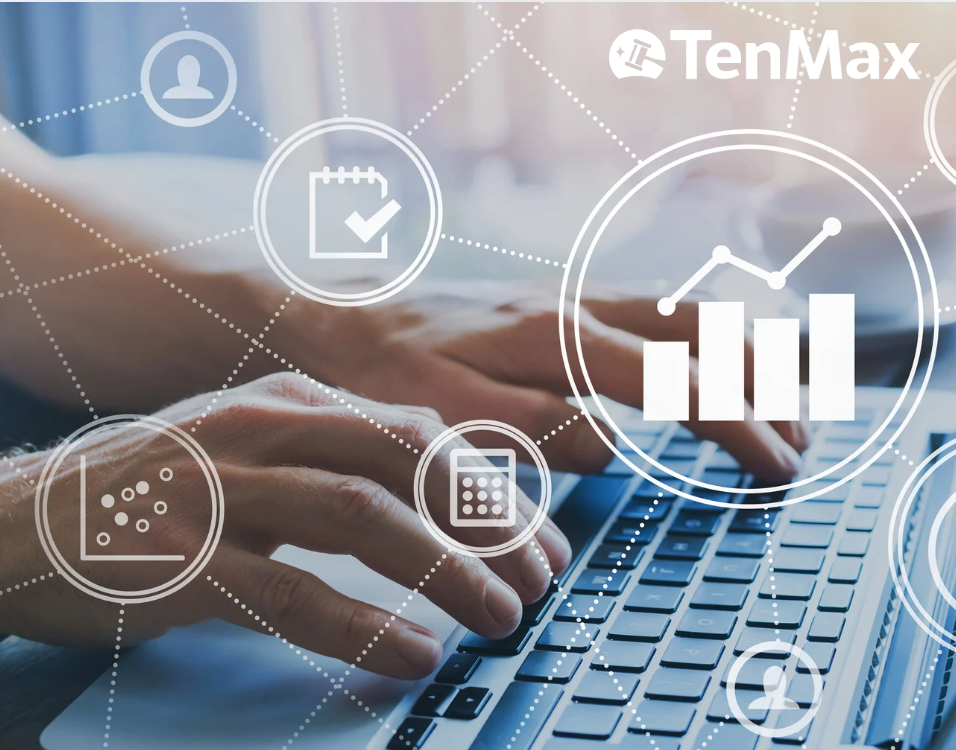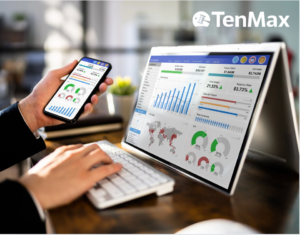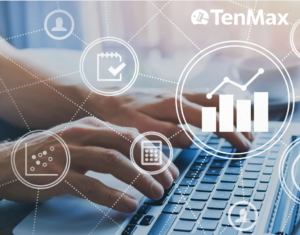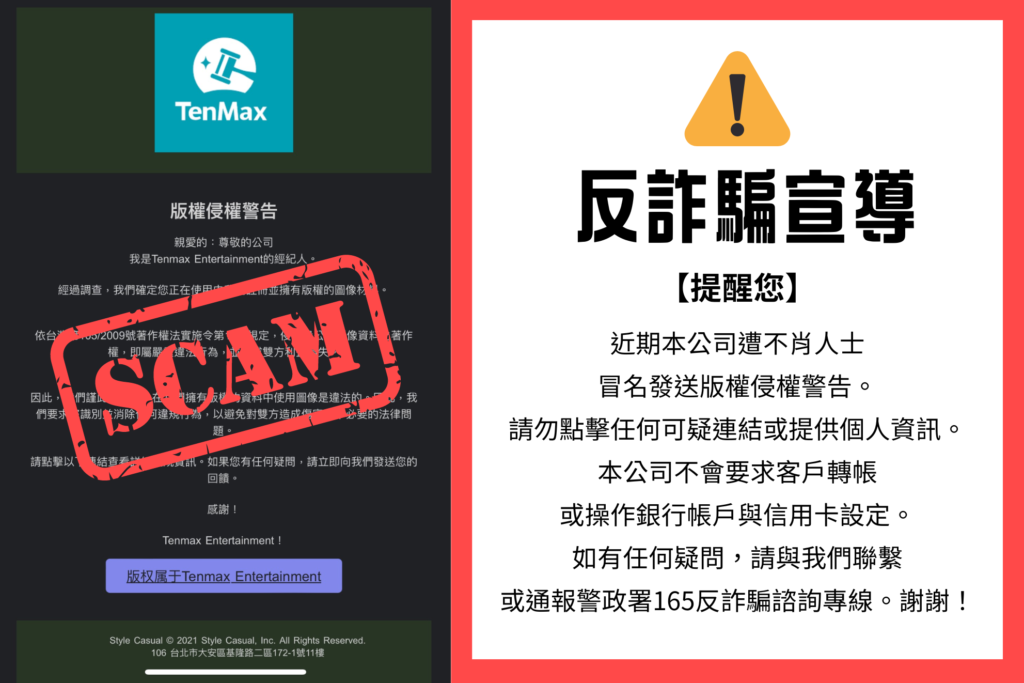As third-party cookies disappear and data privacy regulations tighten, marketers face a critical need to adapt. Meta Signals Gateway is Meta’s response—designed to improve conversion tracking, protect user privacy, and help brands activate their own first-party data across Meta Ads.
In this article, we explore why Signals Gateway matters, what it does, how it compares to other leading CDPs, and how brands can use it to elevate Facebook advertising performance.
Table of Contents
- What is Meta Signals Gateway?
- Why Meta Introduced Signals Gateway
- Key Features and Benefits
- How Signals Gateway works
- Meta Signals Gateway vs. Other Leading CDPs
- Optimizing Facebook Ads with First-Party Data
- Partnering with TenMax for Seamless Integration
What is Meta Signals Gateway?
Meta Signals Gateway is a cloud-based data infrastructure that allows businesses to ingest, process, and transmit first-party data from multiple sources—websites, apps, CRM systems, POS, and more—to Meta Ads and other destinations like BigQuery or custom APIs.
It replaces the older Conversions API Gateway and introduces more flexible controls, multi-destination routing, and real-time activation.
Why Meta Introduced Signals Gateway
The digital advertising landscape has undergone significant changes, presenting challenges for Meta’s advertising ecosystem:
- Reduced Signal Quality: Updates like Apple’s iOS 14.5, along with browser restrictions and the widespread use of ad blockers, have diminished the effectiveness of traditional tracking methods.
- Increased Acquisition Costs and Weakened Conversion Attribution: With less reliable data, attributing conversions accurately has become more difficult, leading to higher customer acquisition costs.
- Heightened Demand for Privacy-First Data Practices: Consumers and regulators are increasingly prioritizing data privacy, necessitating more transparent and secure data handling practices.
In response to these challenges, Meta developed Signals Gateway to:
- Enable Server-Side, Consent-Compliant Data Collection: By shifting data collection to the server side, businesses can gather data in a manner that aligns with user consent and privacy regulations.
- Reduce Dependence on Browser-Based Pixels: Server-side data collection mitigates issues associated with browser limitations and enhances data reliability.
- Enhance Ad Personalization Using Trusted, First-Party Data: Utilizing data collected directly from users allows for more accurate targeting and improved ad performance.
Key Features and Benefits
Meta Signals Gateway offers a suite of features designed to enhance data management and integration for businesses. Here’s an overview of its key capabilities:
1. Full Data Control
Signals Gateway provides comprehensive oversight of collected data, allowing businesses to monitor and manage their data flow end-to-end. Users can block or filter specific events and domains to ensure compliance with privacy regulations and align with strategic objectives.
2. Easy Integration and Cost-Effectiveness
The platform includes built-in tools like Signals Gateway Pixel and customizable connectors, simplifying the integration process and reducing engineering challenges. This user-friendly approach minimizes the need for extensive technical resources, making it a cost-effective solution for data management.
3. Scalability and Flexibility
Signals Gateway is designed to grow with your business, allowing you to expand your data ecosystem at your own pace. It supports integration with new analytics platforms, advertising networks, and the refinement of internal data pipelines, providing the flexibility needed to adapt to evolving business needs.
4. Integration with Plugins
The platform enhances functionality through pre-installed plugins, reducing the need for extensive development. Users can activate plugins such as Meta Conversions API or Google BigQuery, enabling seamless data sharing with Meta, Google, and other destinations.
5. Advanced Analytics and Reporting
Signals Gateway facilitates the transmission of data to Google BigQuery or other data warehouses, enabling detailed analysis and advanced analytics. This capability empowers businesses to derive deeper insights and make data-driven decisions to optimize their operations.
How Signals Gateway works
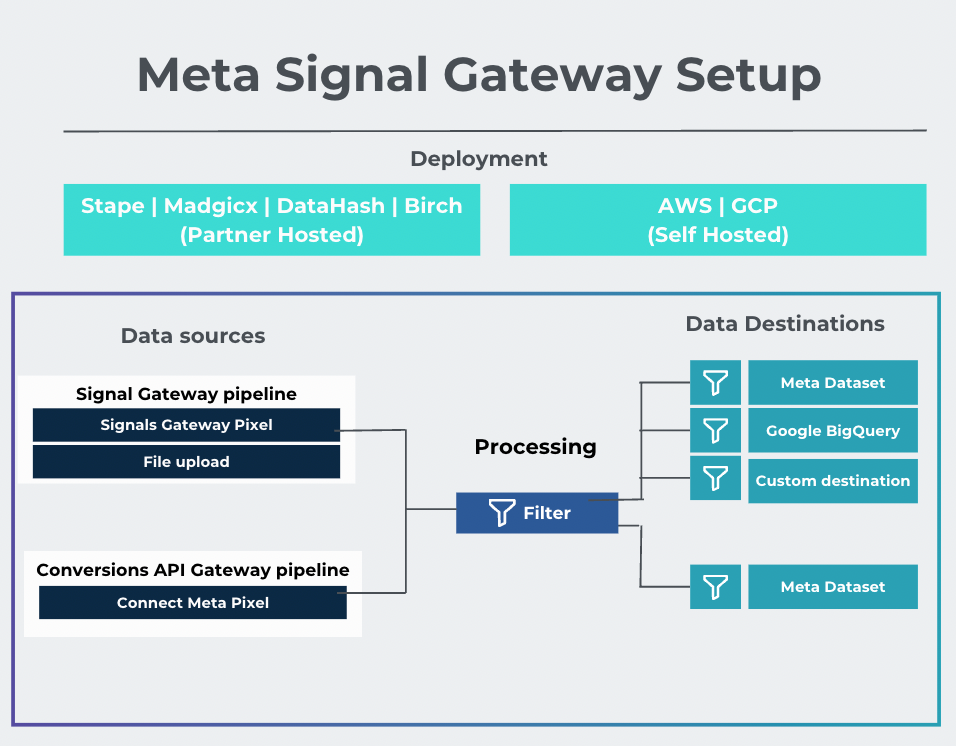
Signals Gateway operates by establishing data pipelines that facilitate the seamless transfer of information from diverse sources to designated destinations. This centralized approach allows businesses to gain comprehensive insights and maintain control over their data flow.
Setting Up Signals Gateway
- Deploy Signals Gateway in Your Cloud Environment: Begin by setting up the Signals Gateway within your chosen cloud infrastructure.
- Establish Data Pipelines: Create data pipelines by linking your data sources, such as the Signals Gateway Pixel or offline data uploads, to your desired destinations like Meta’s Conversions API or Google BigQuery.
- Configure Data Sources: Follow the provided instructions to implement the Signals Gateway Pixel on your websites or schedule offline data uploads, ensuring accurate data collection.
Data Sources
- Signals Gateway Pixel: Captures high-quality web events directly from your websites, ensuring accurate data collection.
- Automatic/Manual Upload: Allows for the scheduled or manual uploading of offline custom data to your cloud environment, providing flexibility to meet your business needs.
Data Destinations
- Custom Destination: Configure connectors to send data to internal systems, data warehouses, analytics platforms, or advertising networks. This flexibility ensures you have full control over how and when your data is shared, aligning seamlessly with your existing marketing infrastructure.
- Google BigQuery: By enabling this connector, you can share data with Google BigQuery for in-depth analytics, enhancing your data analysis capabilities.
- Meta Dataset: This feature allows you to set Meta’s Conversions API as one of your data destinations. Importantly, Meta will only access the data you explicitly choose to share through this configured data pipeline.
Meta Signals Gateway vs. Other Leading CDPs

Optimizing Facebook Ads with First-Party Data
Leveraging Signals Gateway allows brands to harness their first-party data effectively, resulting in several strategic advantages:
- Improved Audience Targeting
Develop precise audience segments, such as website visitors who viewed products but did not complete a purchase, or high-value customers identified through CRM or point-of-sale data. - Personalization at Scale
Utilize actual user behavior data to power campaigns and deliver personalized creative content, enhancing user engagement and conversion rates. - Cross-Channel Coordination
Integrate data collected via Signals Gateway with platforms like Google BigQuery, unifying insights from various sources to develop a more comprehensive and effective marketing strategy. - Increased Return on Ad Spend (ROAS)
By targeting more relevant audiences and utilizing cleaner conversion data, businesses can reduce wasted ad spend and achieve better overall returns.
Partnering with TenMax for Seamless Integration
Implementing and optimizing Meta’s Signals Gateway can be complex. TenMax offers expert assistance to brands seeking to incorporate this powerful tool into their marketing infrastructure.
By partnering with TenMax, brands can confidently navigate the complexities of data integration and unlock the full potential of their advertising efforts with Meta’s Signals Gateway.

